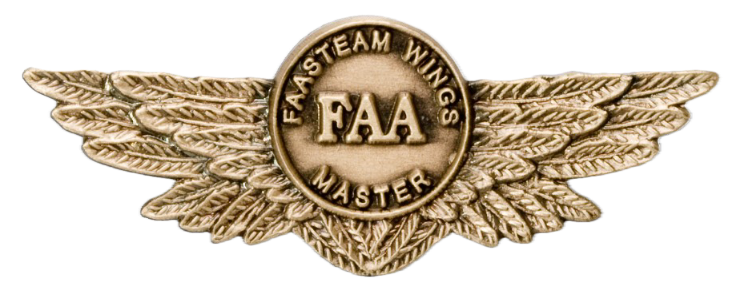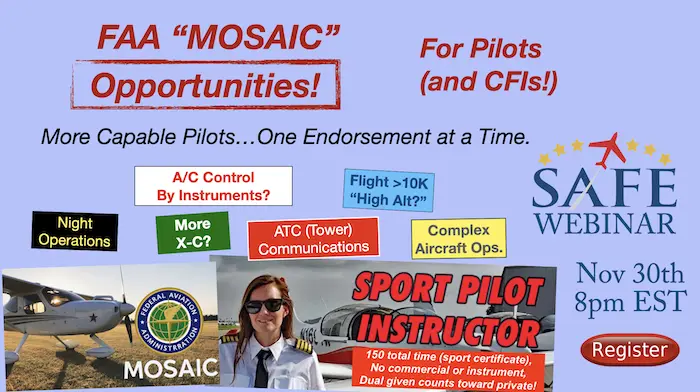
Sunday, Nov 30th! 8pm EDT
"MOSAIC and Flight Training"
New Opportunities for Pilots (and CFIs)
FAA Advanced WINGs Credit!
FAA "MOSAIC" offers a new world of opportunity for sport pilots to expand their skill set. This now includes almost all FAA part 23 aircraft. The 1320# weight limit and 120K max speed limit are now gone. For a sport pilot under MOSAIC, the only limits are a single passenger and VS1 (clean stall speed) max. 59 knots (as originally certified by the manufacturer). Sport qualified aircraft have a different limitation, and must not exceed max. 61 knots VS0 (landing configuration stall speed). That opens up a whole new world of flying for Sport Pilots.
Not only will Sport Pilots be encountering a new world of opportunities, CFIs at every level will be now needed to train and approve these added pilot privileges. The Sport Pilot PTS does not require night flying, aircraft control by reference to instruments, or flight into controlled airspace (and the associated communication skills). These new skills, plus the high performance and complex training will essentially will be the responsibility of the CFI (with no DPE oversight).
This webinar will discuss these new opportunities and responsibilites for both pilots and CFIs created by the new FAA MOSAIC regulations. Register HERE.
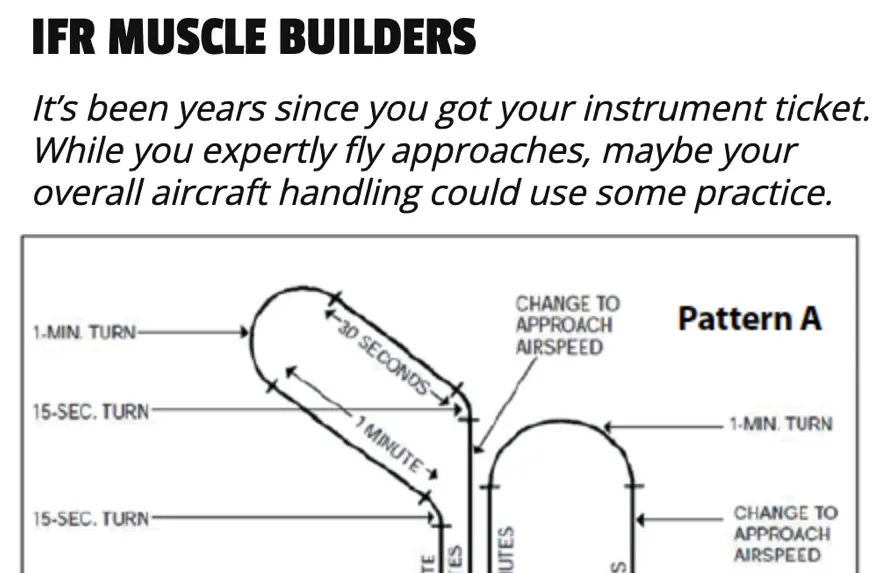
Too many instrument-rated pilots just go out and fly the same local approaches over and over for their currency. Real proficiency requires going back to basics and focusing on precise aircraft control and stretching your brain with new and exotic challenges. It is impossible to "surprise yourself!" You need a creative CFII to turn up the heat and build some "IFR muscles!" This webinar will cover some creative skill builders and scenarios you can use to be ready for "ATC surprises." Your presenters: John Dorcey has been a CFI for over 50 years and David St. George is both an FAA DPE and a 14 time Master Instructor.
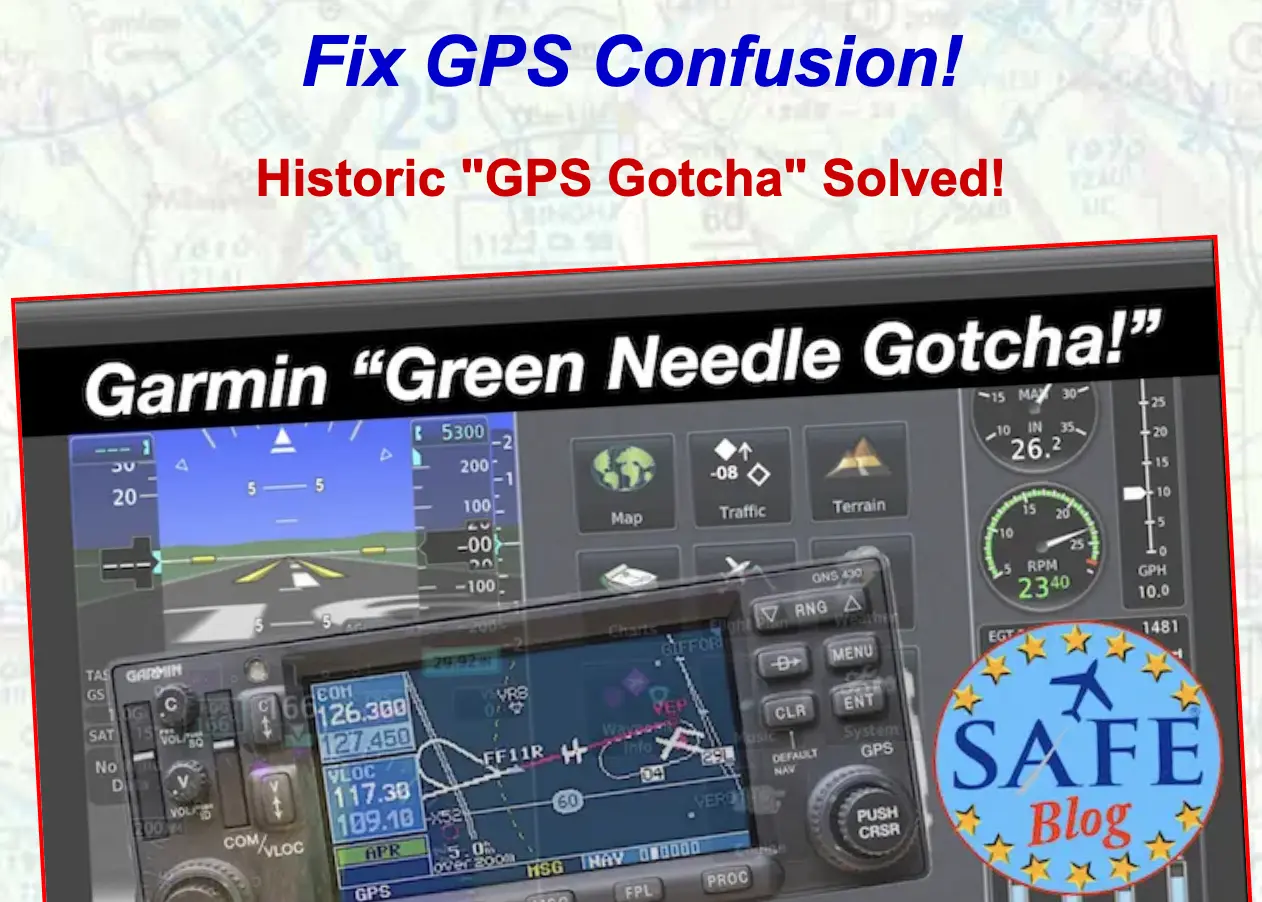
"Rapidly Fading Skills!"
We all forget: Train Frequently!
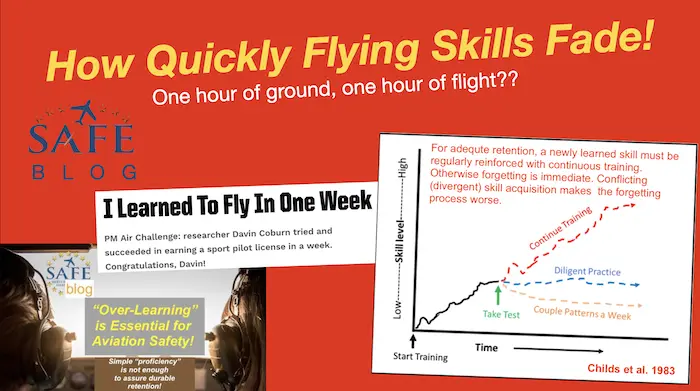
Many flight reviews are conducted in a perfunctory fashion without real challenge and learning. These are the "safety sinkhole" of the aviation safety system. If we do not learn and progress, our skills are atrophying and our learning fading. Our mission as pilots and CFIs is to continuously keep learning. Even if our knowledge and skills were *not* diminishing we would be falling behind because our aviation world is rapidly moving forward.
This show is drawn from this SAFE Blog"Catch the Killers" and FAA tools: "Effective Flight Reviews" (manage expectations; agree to a rigorous learning experience), and "AC 61-98E" on Flight Reviews. The AOPA "Focused Flight Review" is an excellent resource for ground study for all pilots preparing for a flight review. The FAA Safety Course on Part 91 focuses on the required regulatory review.
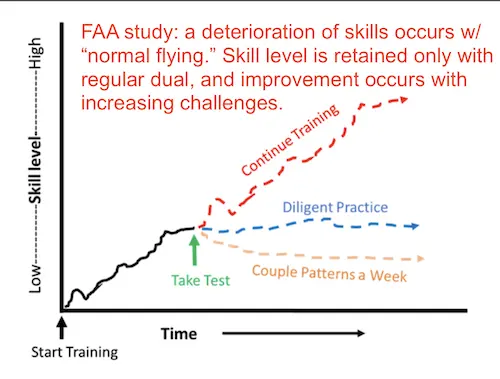
Overcoming Flight Test Anxiety!
All FAA practical tests are "pass/fail," and the FAA emphasizes repeatedly that "perfection is not the standard!" Yet a personal sense of expected perfection often creates excessive nervousness and inhibits effective performance. Calming the nervousness and understanding the "rules of engagement" for an FAA test are essential for success. Thorough and proper preparation creates confidence for a calm, successful testing experience.
This is a "practical test" and all required knowledge, skill, and judgment elements are fully described in the FAA ACS (or PTS). These essential guides are often undervalued but should be the central tool for your test preparation. Just "knowing" is not enough for success. You will be required to "describe and explain" so practice your verbalization of your knowledge.
"Initial CFI" YouTube
Webinar with super additional resources!
Read *THIS SAFE BLOG!*


The initial CFI certificate is a teaching certificate (unique and different from all others you have earned). The CFI evaluation involves a lot more information (retained knowledge) and requires "instructional knowledge" (the ability to organize and present a subject - TEACH). This skill definitely requires some practice capturing yourself with a phone until you can smooth out the performance. Professionalism is part of the curriculum, so organization and grooming are important too.
Historically, when the FAA inspectors did all the initial CFI evaluations, the pass rate on this test was in the 20% range. That gradually increased into this century but jumped dramatically when the FAA finally delegated this test to DPEs. Now the pass rate for initial CFIis higher than the private pilot test. Regardless, the goal of any serious CFI applicant is to put all the pieces together and make this their best performance. This will be your actual job for at least a few years, and you want to be both professional and effective. The CFI is the #1 "influencer" in aviation, responsible for the future safety and standards of the next generation of pilots.
Ironically, many of the habits and techniques we teach test applicants to pass the FAA evaluation are detrimental to real educational effectiveness in the real world. The micro-managing of the controls and continuous jabbering is just plain wrong in the real world of flight instruction. The learner should be flying (and doing the radio calls) and a savvy CFI is only offering occasional (and very thoughtfully constructed) instructional input (called "chunking"). The distractions in flight, coupled with an early learner's concentration on flying prevent any long or detailed interventions.
The goal of early fights especially is to provide a safe environment for your learner to explore and master the controls (and overcome fear). The CFI needs to provide a safe and comfortable experience with the correct amount of challenge and novelty to move the needle steadily forward. Remember, our ultimate goal is to get out of the plane (and make ourselves superfluous).

Since the removal of Minimum Controllable Airspeed (MCA) from flight testing in 2016 with the publication of FAA SAFO 16010, most CFIs no longer teach MCA. Consequently, most pilots do not understand "induced drag" and "the region of reversed command." Many pilots fear (and avoid) slow flight and stall practice.
MCA is slower than the current "slow flight." As described in Area of Operation X, Task B in the CFI-ACS, pilots are required to fly on the edge of a stall (region of reversed command) with the stall warning device fully active. Any increase in pitch or reduction of power in this configuration will result in an immediate stall. The primary aerodynamic force at work is "induced drag" which is very non-intuitive to a new pilot.
Mysterious Induced Drag
The Secret to New CFI-MCA!

Once a plane flown slower than best glide speed and minimum drag speed, it takes *more* power to sustain flight at a level altitude at a slower airspeed. Induced drag increases exponentially as the plane gets slower, requiring greater pilot skill to maintain control. Pilots who attempt a go-around and fail to control the pitch attitude or get "low and slow" on a landing approach, very possibly will end up in the "region of reversed command" with full power and a decreasing airspeed (this usually does not end well). The only solution here is adding (or maintaining) full power while managing the yaw and reducing the angle of attack smoothly to accelerate. Since altitude in these situations is at a minimum, careful energy management is critical to success. Prior practice with this configuration obviously is an important safety tool for every pilot (and CFI).
"Integrated" Energy Management
Smoother/Safer/Efficient!

While practicing this for the CFI checkride, the ACS procedure specifies achieving a stable MCA first, noting the power and airspeed, then lowering the nose and accelerating to a faster stabilized speed on the the other side of the power curve; area of parasite drag.This demonstration illustrates that an aircraft will stabilize on either side of the minimum drag speed; one with induced drag primary and one with parasite drag primary.
This is a powerful demonstration for any pilot and reveals the "magic" behind why raising the nose (carefully) on final when slow will cause the rate of descent to *increase.* This configuration is also encountered in a properly flown soft field take-off where the nose has to be lowered in ground effect - again carefully - to accelerate and achieve a successful climb. Many accidents occur every year from pilots failing to understand and control induced drag. Find a more complete description by Dr. Donna Wilt HERE Great thanks to SAFE's ACS representative, Donna WIlt, for getting this important maneuver accepted into the new CFI ACS.
See previous Sept. 22 webinar here
"Comfort Zone Pilots" are vulnerable to LOC-I when experiencing an upset (they have no recovery tools). These pilots often suffer from "stall training PTSD" inflicted in their primary training. SAFE Extended Envelope Training is designed to incrementally expand a pilot's "comfort zone" for safer more comfortable flying.
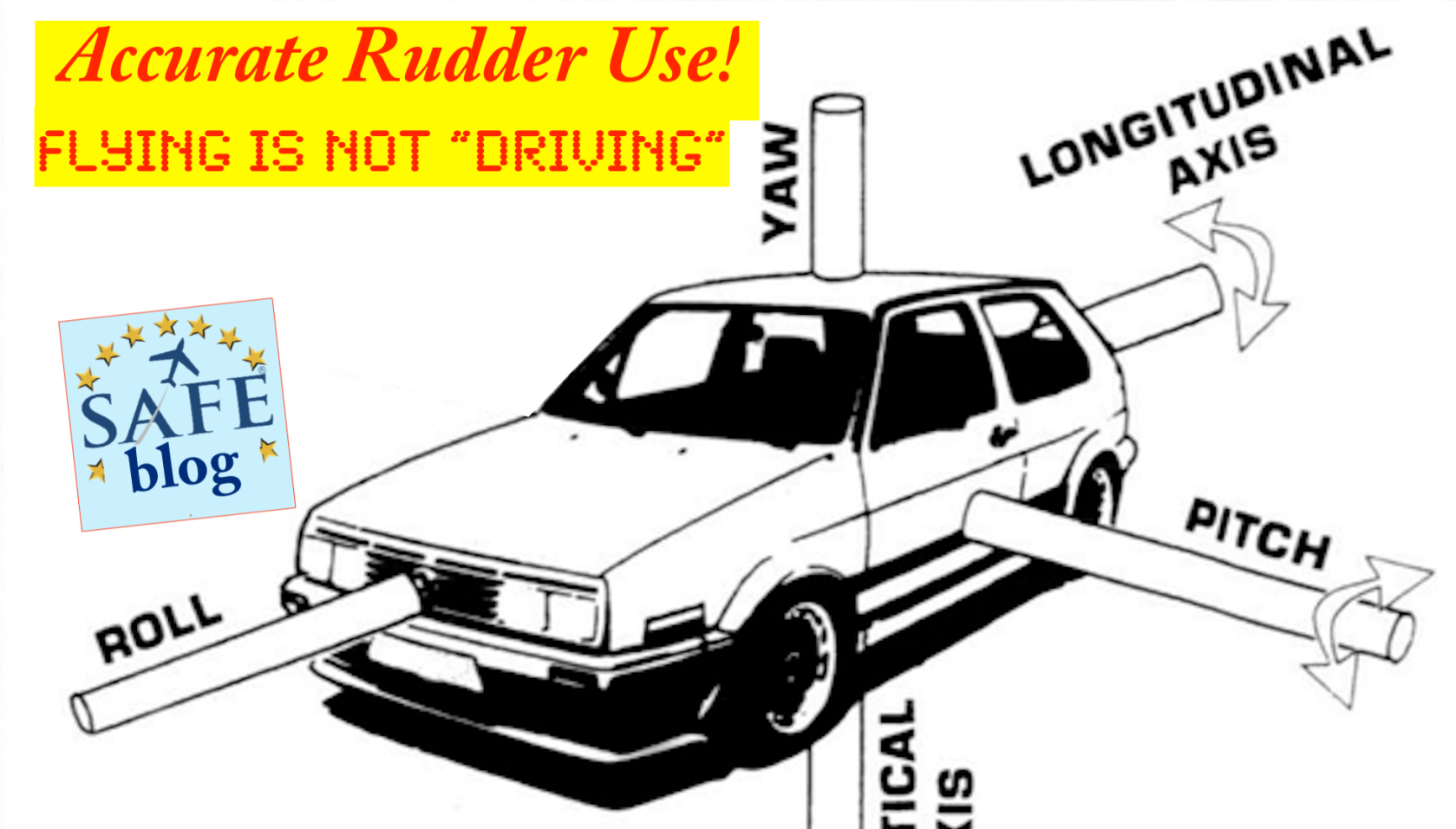
Reflective Logbook
Analyze and Redirect After Every Flight!
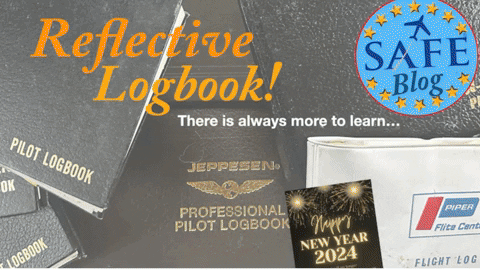
Incremental Mastery
This Webinar Focus: Building Amazing Pilots With Excellence and Mastery!
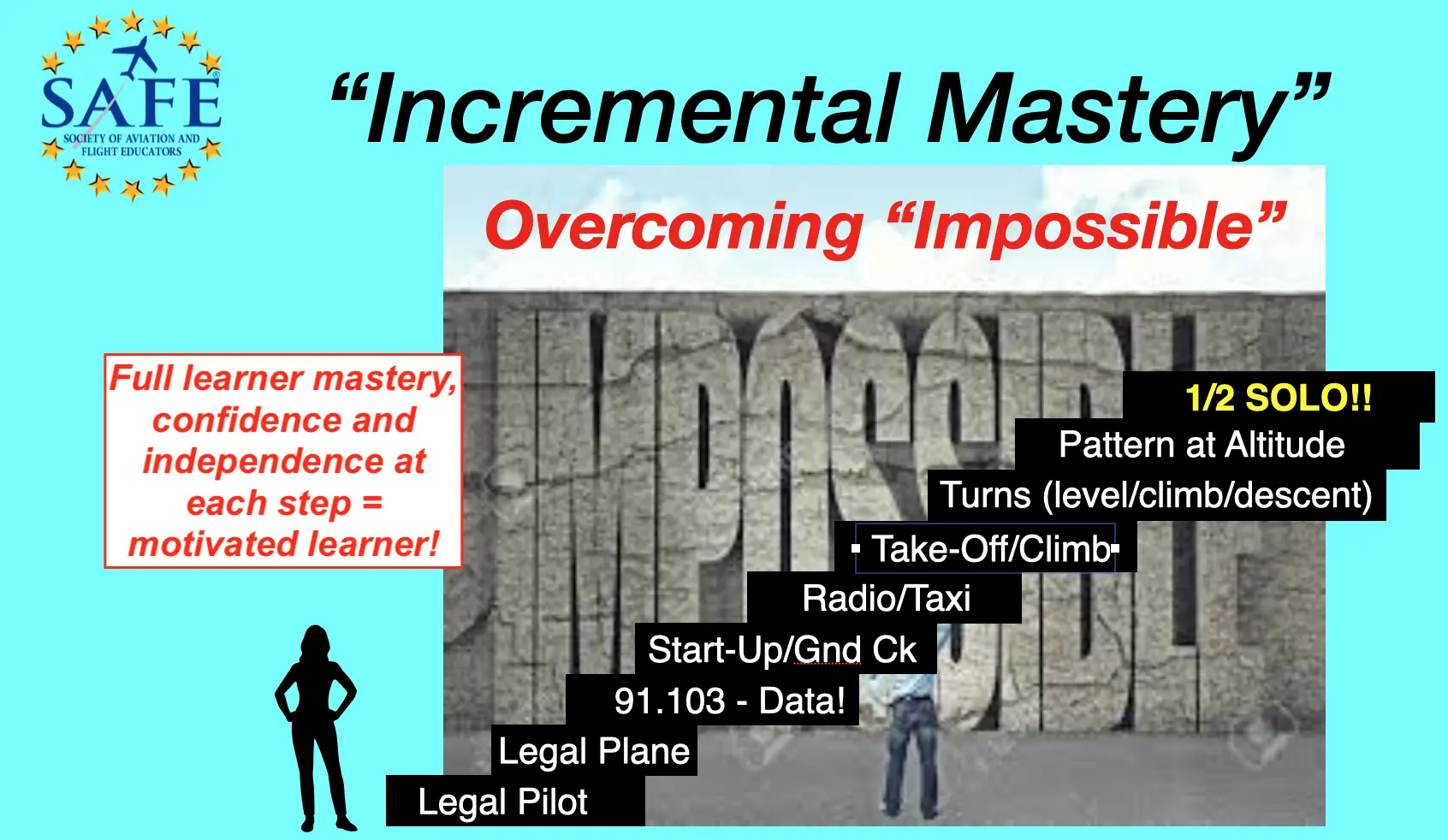
SAFE CFI-PRO™
The "Missing Manual: For New CFIs"
Immediate CFI Improvement Here!
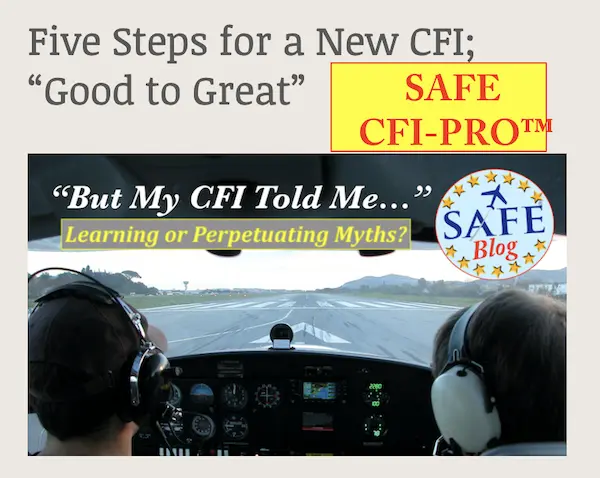
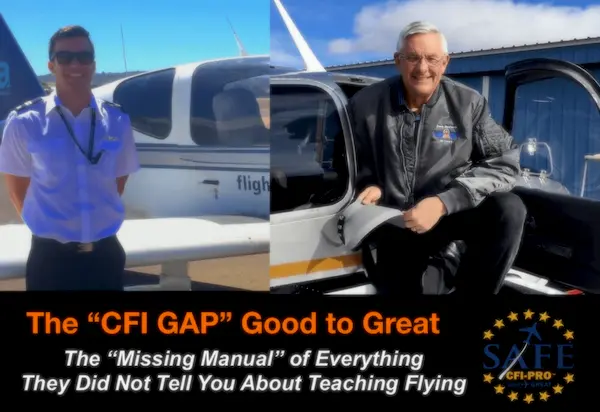
"My First 100 Hrs as a CFI"
New CFI- "License To Learn"
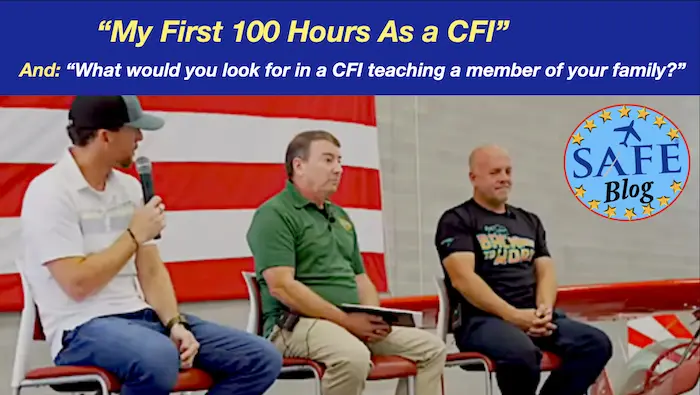
Soon Combined Into
"The CFI Survival Guide"
Start Honest; “Engagement Letter!”
“The Learning Zone;” No Excuses, No Embarrassment!
Lesson One: Perfect Picture
Conquer The Driving Habit (We All Have)!
"Change/Check" For Precise Control
Recurring Flight Training Fallacies!
10 Tools For New CFIs
Motivate With “Incremental Mastery!”
Teach Landings With "Centerline Slowflight"
Master "Full Control" Landings
Teach Every Learner Crosswinds!
“CFI Seasoning” Beyond the Academy!
Real CFI Learning *Begins* With Temporary!
10 Essential Rules for a New CFI!
Several Great Books on Learning
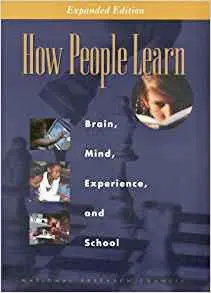
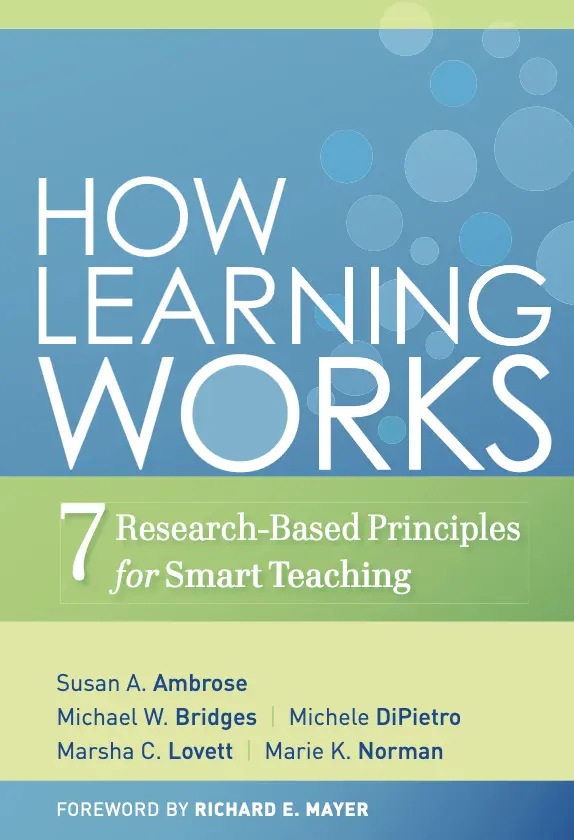
Join SAFE and SAVE!"
Amazing 15% OFF ForeFlight!
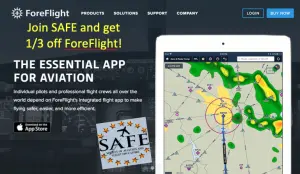
Easy "Pilot Math!"
Save Immediately!
(Even if you Just Renewed!)
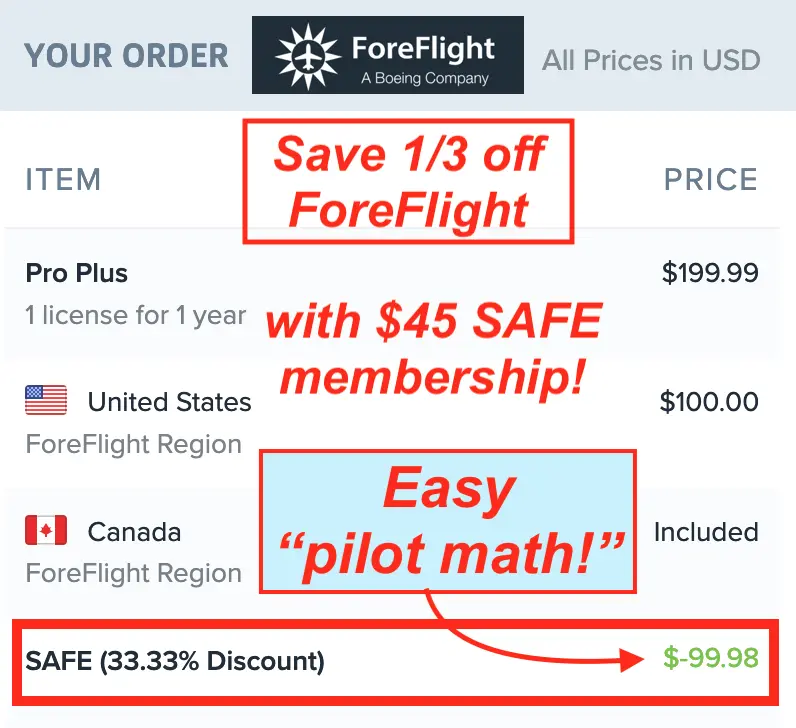


Immediate CFI Improvement Here!
"My First 100 Hrs as a CFI"
New CFI- "License To Learn"

Soon Combined Into
"The CFI Survival Guide"
Start Honest; “Engagement Letter!”
“The Learning Zone;” No Excuses, No Embarrassment!
Lesson One: Perfect Picture
Conquer The Driving Habit (We All Have)!
"Change/Check" For Precise Control
Recurring Flight Training Fallacies!
10 Tools For New CFIs
Motivate With “Incremental Mastery!”
Teach Landings With "Centerline Slowflight"
Master "Full Control" Landings
Teach Every Learner Crosswinds!
“CFI Seasoning” Beyond the Academy!
Real CFI Learning *Begins* With Temporary!
10 Essential Rules for a New CFI!
Several Great Books on Learning


Join SAFE and SAVE!"
Amazing 15% OFF ForeFlight!

Easy "Pilot Math!"
Save Immediately!
(Even if you Just Renewed!)


"The CFI Survival Guide"
“The Learning Zone;” No Excuses, No Embarrassment!
Lesson One: Perfect Picture
Conquer The Driving Habit (We All Have)!
"Change/Check" For Precise Control
Recurring Flight Training Fallacies!
10 Tools For New CFIs
Motivate With “Incremental Mastery!”
Teach Landings With "Centerline Slowflight"
Master "Full Control" Landings
Teach Every Learner Crosswinds!
“CFI Seasoning” Beyond the Academy!
Real CFI Learning *Begins* With Temporary!
10 Essential Rules for a New CFI!


Amazing 15% OFF ForeFlight!

(Even if you Just Renewed!)
